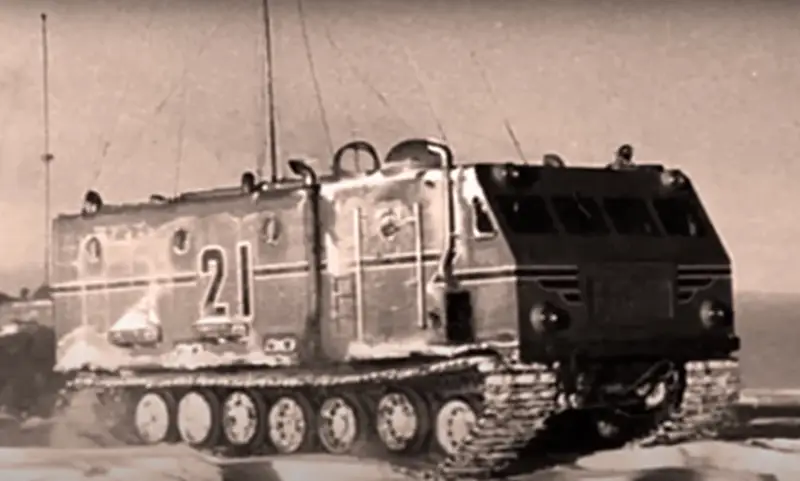“Kharkovchanka”: what the legendary tracked all-terrain vehicle was like for Soviet polar explorers

The conquest of Antarctica has always been one of the main areas of research activity of polar explorers. Naturally, for such important and, at the same time, dangerous events, all the most advanced technologies were developed.
The all-terrain vehicle project for Soviet polar explorers was launched in 1958. The main requirements were high maneuverability, spaciousness and the ability to operate at temperatures down to -80 degrees Celsius.
This is how the all-terrain vehicle “Kharkovchanka” appeared. The vehicle was built in three months on the basis of a heavy A-TT tracked tractor, the chassis of which was extended by two road wheels to accommodate the installation of a large-sized body.
The power unit was a twelve-cylinder diesel engine with a power of 520 hp. with turbocharging. Using the above-mentioned unit, this diesel engine could produce power up to 990 hp.
The total weight of the vehicle was 35 tons. At the same time, she could pull a sled with a load of up to 70 tons. To increase the cross-country ability of the all-terrain vehicle in the snow, its tracks were expanded to 1 meter.
All-terrain vehicle "Kharkovchanka" built at the Kharkov plant named after. Without exaggeration, Malyshev can be called a polar station on caterpillars. The externally rectangular body was made of duralumin aluminum using eight-layer thermal insulation made of nylon wool. At the same time, the total area of the internal space was 28 square meters.
It contained such compartments as a vehicle control room, a cockpit with eight folding berths, a radio station, a wardroom, a campus, and a heated latrine. There were three sealed doors for the crew to exit.
In December 1959, three Kharkovchanka all-terrain vehicles reached the South Pole. The machines showed high reliability and unpretentiousness. The only drawback of the all-terrain vehicle, which was noted by polar explorers, was the release of carbon monoxide from the engine into the living quarters.
The problem was completely solved in the second version of the car, developed in 1975, where the cabin and living quarters were separated.
Both machines were successfully operated by Soviet and Russian polar explorers until 2008.
Information